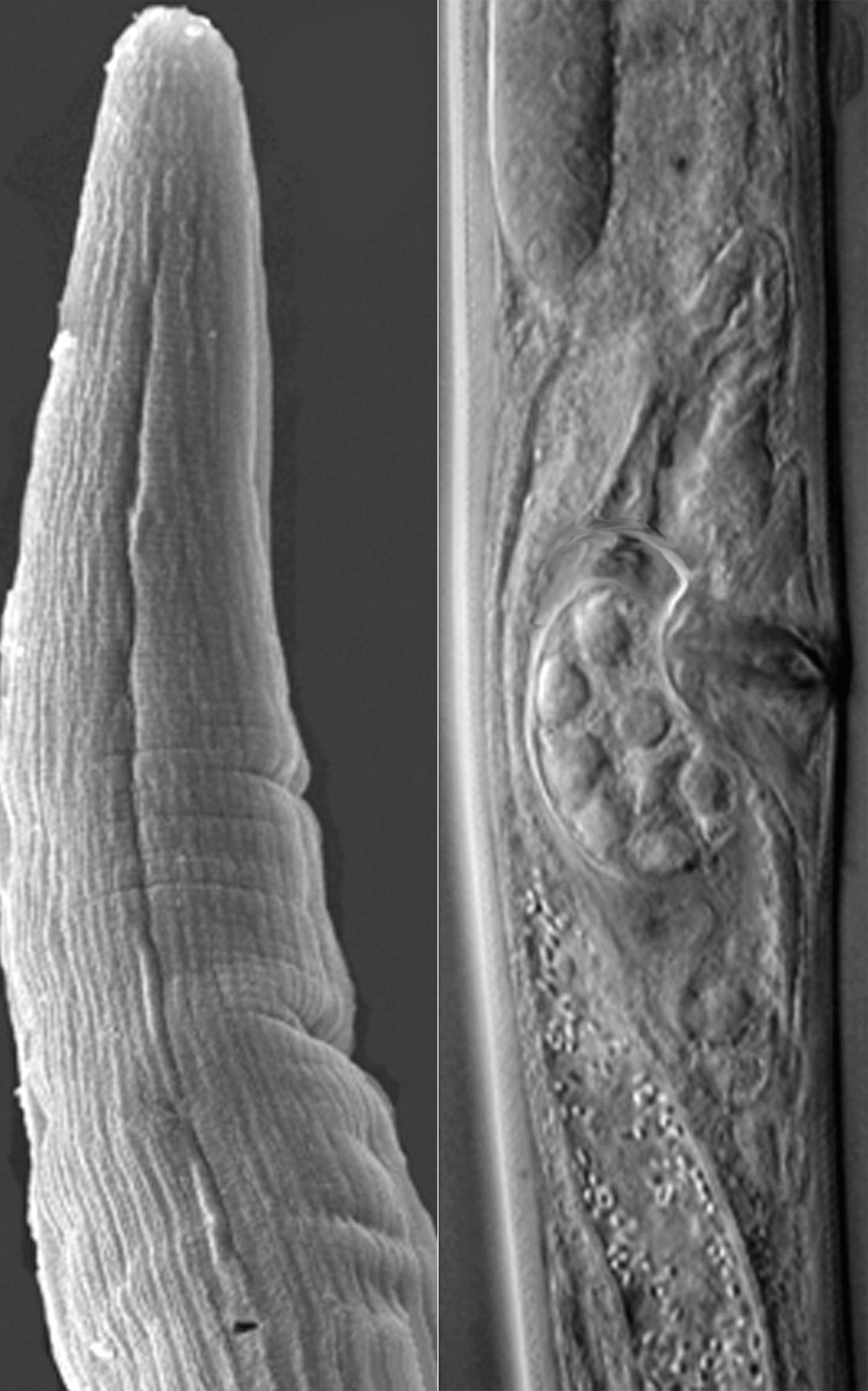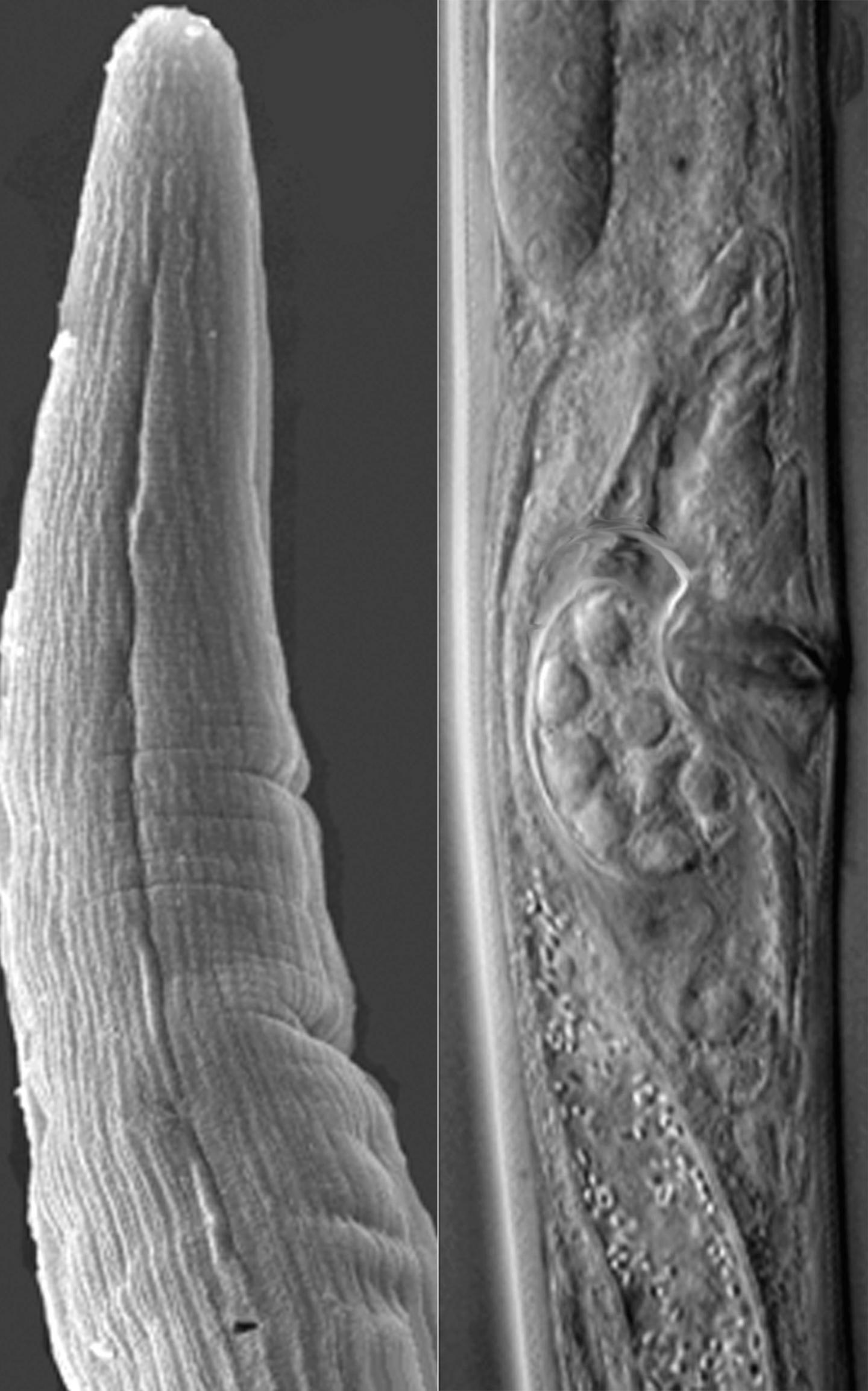
The unique features and blending characters of a new roundworm species, discovered in India, make the nematode a distinct yet intermediary or connecting link between two supposedly distant genera. The new worm is a hermaphrodite that primarily feeds on bacteria. The study, conducted by a research team from the Aligarh Muslim University, India, led by Dr Qudsia Tahseen, is published in the open access Biodiversity Data Journal.
The newly discovered nematode belongs to the genus Acrostichus, which is reported from all continents except Australia. The biogeographical records show larger distribution of these species in subtropical to temperate regions (Image 3). They can be found in soil, fresh water, polluted water, decaying matter and even in beetle feces.
The new roundworm, called Acrostichus medius, is hereby reported from soil rich in organic matter. The population comprises of both hermaphroditic female and males (Image 2). The species seems to serve a transitional role in the evolutionary process linking the Acrostichus and Diplogastrellus genera.
The narrow mouth cavity eliminates the possibility of predation thus leaving bacteriophagy as the only option in terms of its feeding behavior.
The new species is unique in possessing robust male copulatory organs (spicules) having furcate distal ends with fine extensions and a ventral attenuated arm. Such copulatory organs are unusual for the group and it also reflects a more complex type of copulation process involving elaborately-built female vagina.
Apart from other intermediate characters, the new species possesses paired female genital branches with a gradual reduction in the posterior genital branch up to the extent of the post-uterine sac in some individuals. Thus, the new species seems to be a transitional species in the evolutionary process and shows affinities to both Acrostichus and Diplogastrellus genera.
The characters of twenty species were taken for cluster analysis of Acrostichus. In the constructed phylogram (Image 1), Diplogastrellus cerea, a species of closely related genus, stands out from all species of Acrostichus. The new species A. medius occupies an intermediate position between the outgroup species and other congeners.
###
Original source:
Tahseen Q, Ahlawat S, Asif M, Mustaqim M (2016) Description of a new species of Acrostichus Rahm 1928 (Nematoda: Diplogastridae) from India with a note on its position and relationship with the congeners. Biodiversity Data Journal 4: e8029. doi: 10.3897/BDJ.4.e8029
Media Contact
Dr. Qudsia Tahseen
[email protected]
@Pensoft
http://www.pensoft.net





